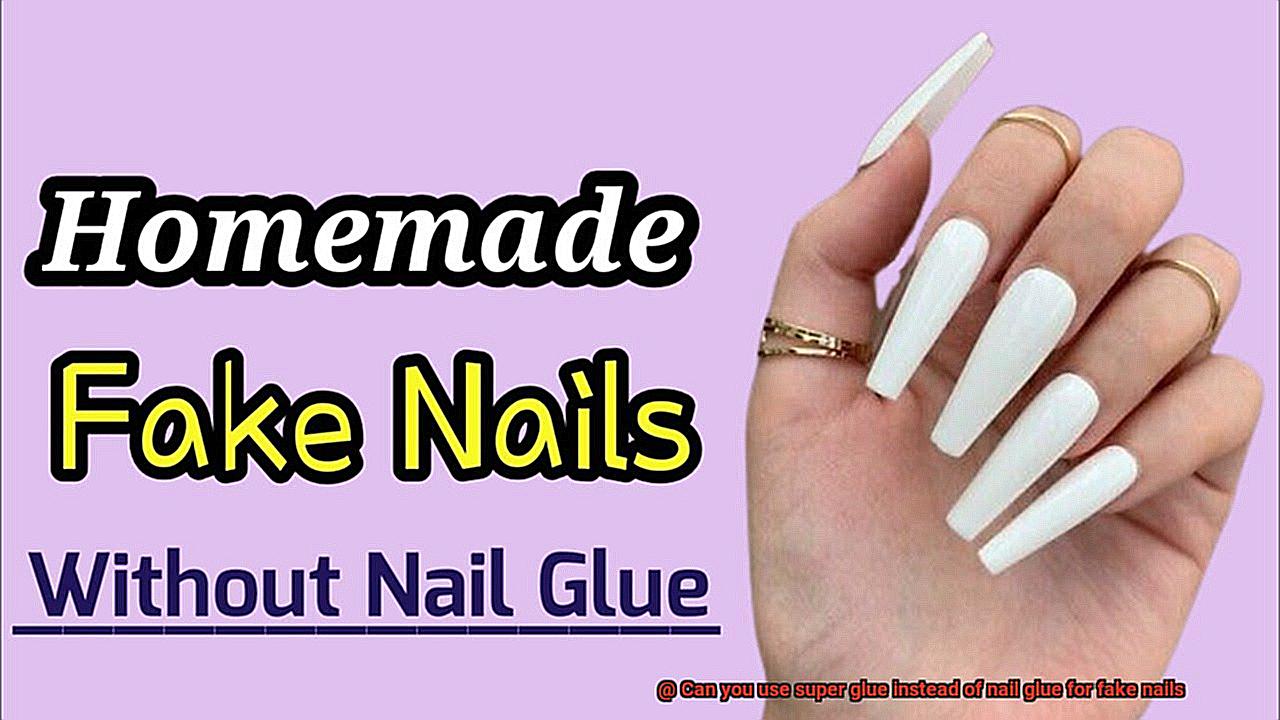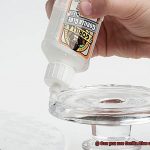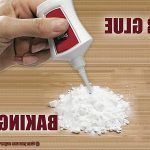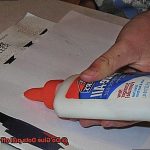When it comes to applying fake nails, we’ve all been there – in a rush and desperate for a solution. That’s when the thought pops into our heads: why not use super glue instead of nail glue? It seems like the perfect shortcut, right? Well, hold on tight as we dive into the world of nail care to uncover the truth about using super glue for fake nails.
Sure, super glue might seem like a quick fix, but before you go down that road, let’s talk about the potential downsides. Nail glue is specially designed for artificial nails, offering unique properties that guarantee a strong and long-lasting bond. In this blog post, we’ll explore the differences between these two adhesives and weigh up their pros and cons. So sit back, relax, and get ready to discover the real deal behind this beauty dilemma.
What Is Super Glue?
Contents
- 1 What Is Super Glue?
- 2 What Is Nail Glue?
- 3 Differences Between Super Glue and Nail Glue for Fake Nails
- 4 Potential Risks of Using Super Glue Instead of Nail Glue on Fake Nails
- 5 Advantages of Using Nail Glue for Fake Nails
- 6 Alternatives to Super Glue and Nail Glue for Fake Nails
- 7 How to Apply Fake Nails with Super Glue or Nail Glue
- 8 Tips for Removing Fake Nails with Super Glue or Nail Glue
- 9 Conclusion
Super glue, also known as cyanoacrylate adhesive, is a remarkable and versatile adhesive that bonds materials together quickly and strongly. Here are some key points about super glue:
- Fast-bonding: Super glue lives up to its name by bonding rapidly. It sets in seconds or minutes, depending on the product.
- Clear liquid to solid: Super glue starts as a clear liquid but solidifies when exposed to moisture in the air. This transformation occurs through a chemical reaction called polymerization.
- Versatile bonding: Super glue can bond a wide range of materials, including plastics, metals, ceramics, rubber, and certain fabrics. It is an excellent choice for DIY projects, crafts, repairs, and even medical applications.
- Strong and durable: The bond created by super glue is rigid and durable. It often surpasses the strength of the materials being joined together.
- Resistant to temperature and chemicals: Super glue can withstand temperature changes and many chemicals without compromising its bond.
- Viscosity options: Super glue comes in various viscosities, from thin liquids to gels. Thin super glue is suitable for precise applications, while thicker viscosities offer better gap filling capabilities.
- Caution required: It’s important to handle super glue with caution as it can adhere to skin quickly. Wearing protective gloves or using tools such as tweezers is advisable to avoid accidental skin contact.
- Removal: If accidental skin bonding occurs, soaking the affected area in warm soapy water can help loosen the bond.
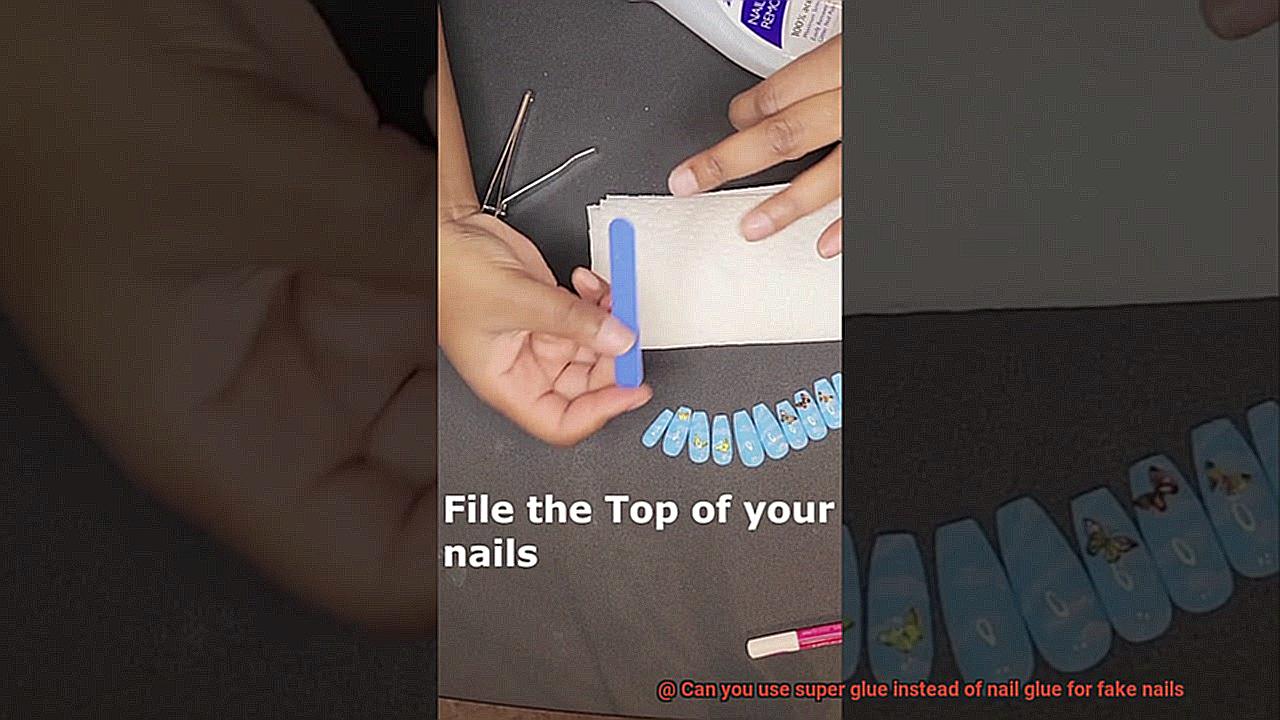
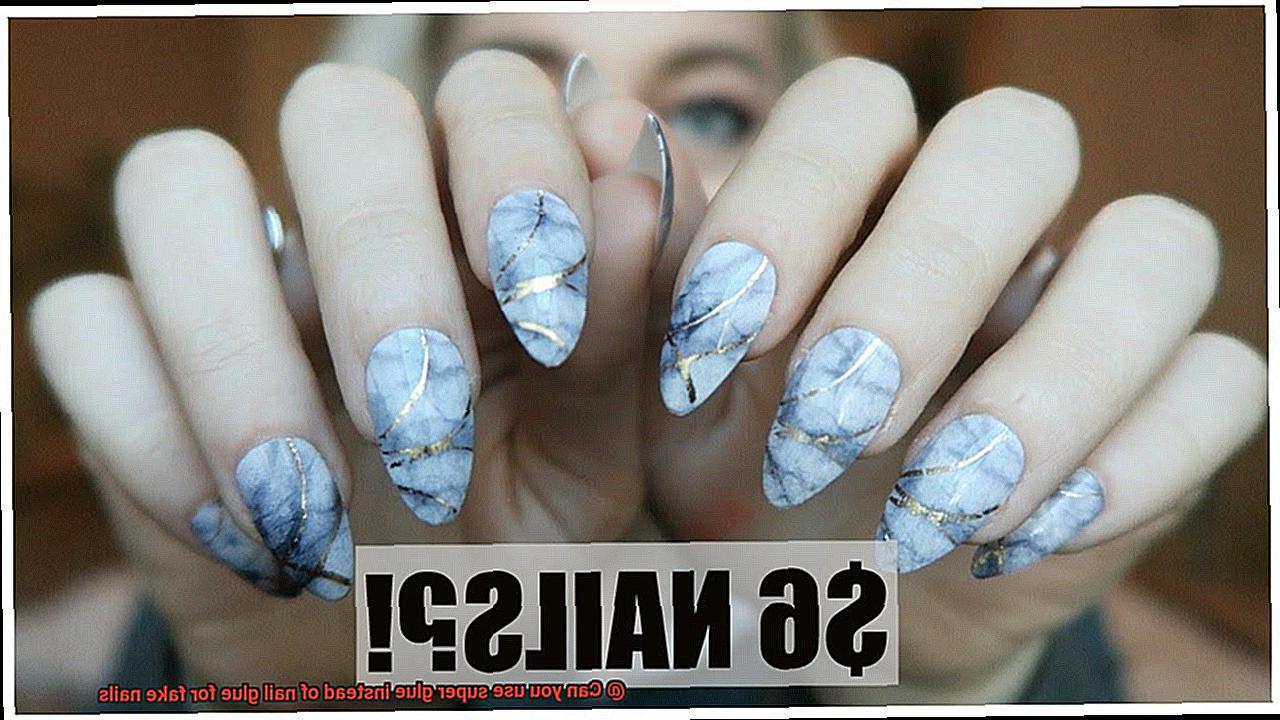
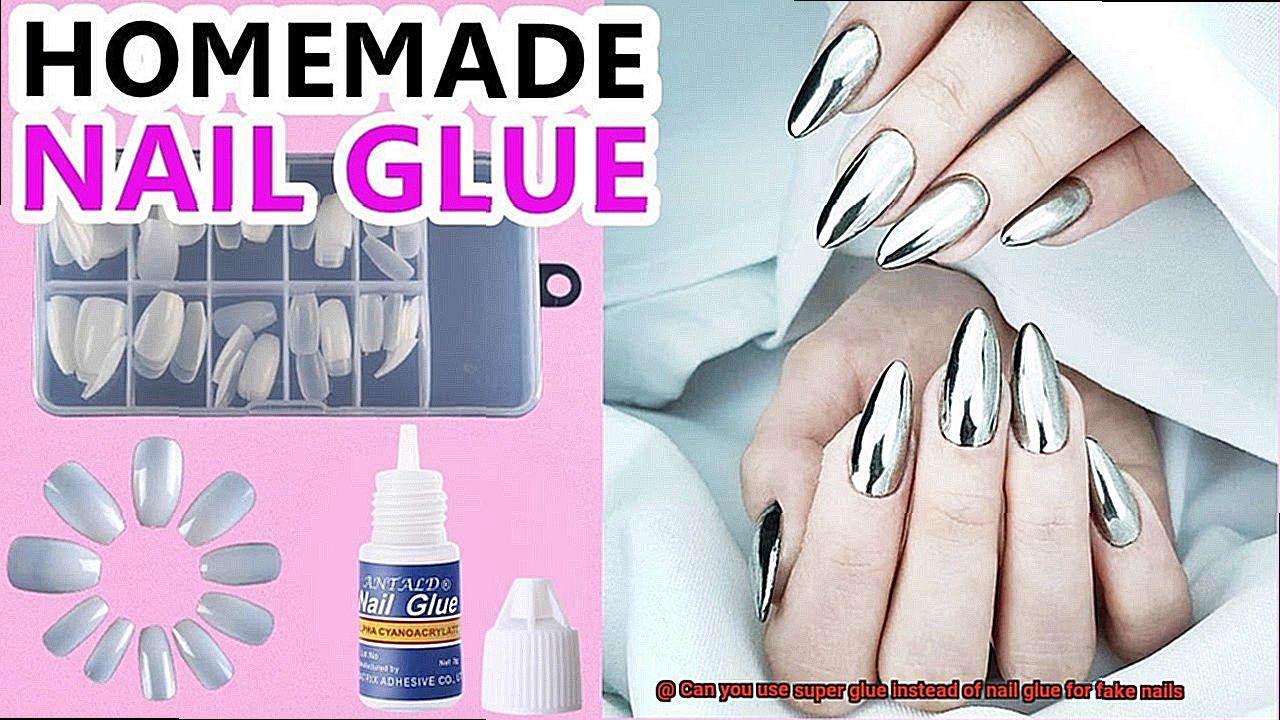
What Is Nail Glue?
Nail glue is a specialized adhesive that is specifically designed for use on nails. It is commonly used to apply artificial nails, such as acrylic or gel nails, as well as to repair natural nails that have been damaged or broken. Nail glue typically comes in small bottles with a brush applicator, making it easy to apply a thin and even layer onto the nail surface.
The main ingredient in nail glue is cyanoacrylate, which is a fast-drying adhesive that forms a strong bond when it comes into contact with moisture. This is why it is important to ensure that the nail surface is clean and dry before applying the glue. Nail glue also often contains other additives, such as resins or polymers, to enhance its adhesive properties and improve its durability.
One of the key characteristics of nail glue is its quick-drying nature. Unlike regular glue, which may take several minutes or even hours to fully dry, nail glue sets within seconds when exposed to air. This makes it ideal for applying artificial nails, as it allows for a quick and efficient application process. However, it also means that users need to work swiftly and accurately to ensure proper placement of the artificial nails before the glue sets.
Nail glue is specifically formulated to create a strong bond between the artificial nail and the natural nail. It provides a secure and long-lasting attachment, ensuring that the artificial nails stay in place for an extended period of time. This is especially important for individuals who want to enjoy the benefits of artificial nails without worrying about them popping off or becoming loose.
In addition to its adhesive properties, nail glue also plays a role in creating a smooth and seamless finish on the nails. When applied correctly, it helps to fill in any gaps or imperfections between the natural and artificial nails, creating a polished and professional appearance.
However, there are some disadvantages to using nail glue. One of the main drawbacks is that it can be difficult to remove. Nail glue forms a strong bond, and removing it can require soaking the nails in acetone or using a specialized nail glue remover. This can be time-consuming and may cause damage to the natural nails if not done properly.
Another disadvantage is that nail glue can be messy to work with. It is important to apply the glue in a well-ventilated area, as the fumes can be strong and irritating. Additionally, if the glue is not applied evenly or if too much is used, it can create a lumpy or uneven surface on the nails.
Differences Between Super Glue and Nail Glue for Fake Nails
Super glue, also known as cyanoacrylate adhesive, is a versatile adhesive that bonds various materials together quickly. However, it is not recommended for attaching fake nails. Nail glue, on the other hand, is specifically formulated for this purpose and offers several advantages over super glue.
Firstly, the formulation of these glues differs greatly. Super glue is a general-purpose adhesive designed for various materials like plastic, metal, and wood. Nail glue, on the other hand, is specifically formulated for use on nails and is less likely to cause irritation or damage when applied correctly. It contains ingredients like rubber compounds or acrylic polymers that promote adhesion while being gentle on the nails.
Another significant difference is the viscosity of the glues. Nail glue has a thinner and more fluid consistency, making it easier to apply evenly onto the nails. Super glue, with its thicker consistency, can be more challenging to apply precisely.

The applicators of these glues also vary. Nail glues often come with brush applicators or nozzles that allow for precise application. This is especially helpful when attaching small fake nails. Super glue typically comes in small tubes with narrow openings, making it harder to control the amount of adhesive applied.
When it comes to removal, nail glue can be easily dissolved or softened with acetone-based nail polish removers. This allows for safe removal of fake nails without damaging the natural ones. Super glue, however, requires more aggressive methods like soaking in warm soapy water or using specialized adhesive removers since it is not easily dissolved by acetone.
Potential Risks of Using Super Glue Instead of Nail Glue on Fake Nails
Using super glue instead of nail glue on fake nails can pose several potential risks. Let’s explore these risks in more detail:
- Skin irritation and allergic reactions: Super glue contains cyanoacrylate, a strong adhesive that can cause skin irritation, redness, and even burns if it comes into contact with the skin. Nail glues, on the other hand, are specifically formulated for use on nails and are less likely to cause adverse reactions. The skin around the nail bed is delicate, and using super glue may lead to discomfort or even an allergic reaction.
- Nail damage: Super glue can be difficult to remove and may require harsh chemicals or excessive filing to get rid of. This process can weaken and damage the natural nails. Nail glues, however, are designed to be easily removable without causing harm to the natural nails. Using super glue may result in brittle or weakened nails, leading to potential breakage or thinning.
- Poor adhesion and shorter-lasting results: Nail glues are formulated with specific ingredients that create a strong bond between the fake nail and the natural nail, ensuring long-lasting wear. Super glue may not provide the same level of adhesion and may result in fake nails popping off or lifting prematurely. Imagine your beautiful faux nails coming loose at an inconvenient time.
- Voiding warranty or guarantee: Many manufacturers specify the type of adhesive that should be used with their fake nails, and deviating from these recommendations may void any warranty or guarantee coverage. Using super glue on fake nails may mean losing out on any protection or replacement options offered by the manufacturer.
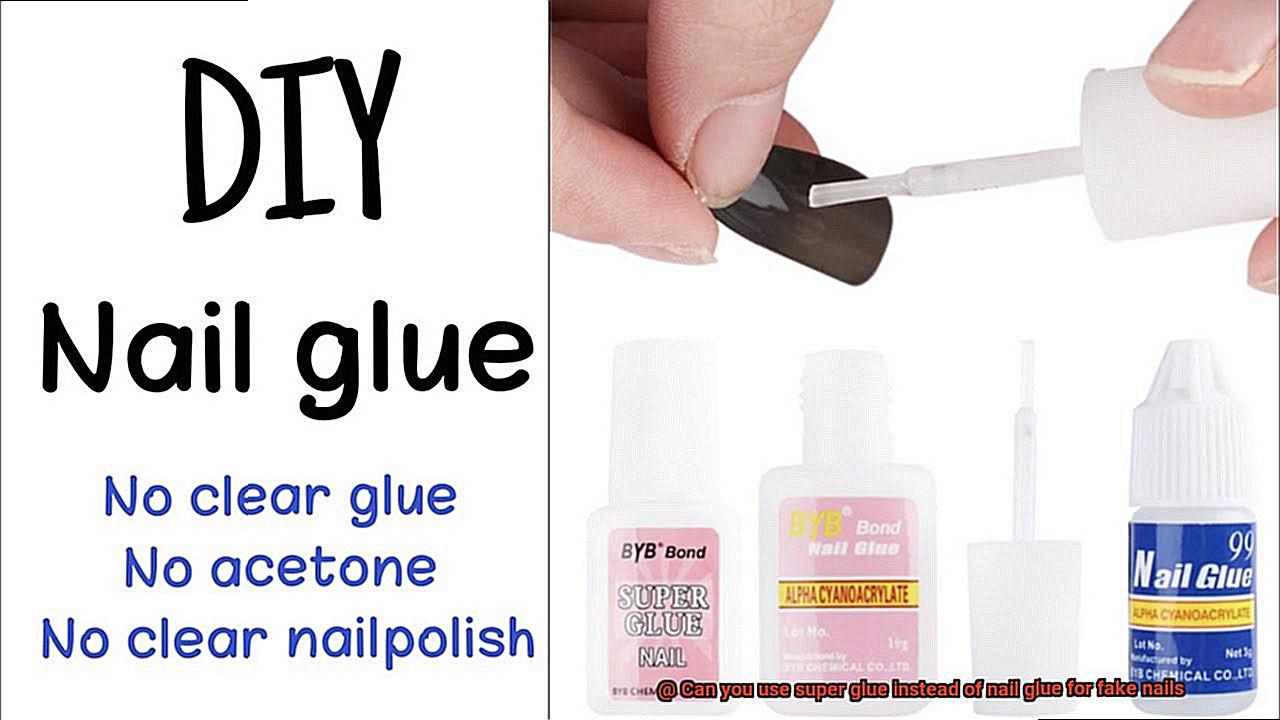

Advantages of Using Nail Glue for Fake Nails
When it comes to applying fake nails, using the right adhesive is essential for a secure and long-lasting manicure. While some may consider using super glue as a quick fix, opting for nail glue specifically formulated for this purpose offers several advantages. Let’s take a closer look at why nail glue is the safer and more suitable option for applying fake nails.
Firstly, nail glue is safer and gentler on the nails compared to super glue. It is specifically formulated for use on nails, making it gentler on the delicate nail bed. This reduces the risk of irritation or damage to your natural nails, ensuring that they stay healthy and strong.
Secondly, nail glue offers a quick-drying and strong bond. Made from cyanoacrylate, a powerful adhesive known for its quick-drying properties, nail glue ensures that your fake nails stay securely in place. No need to worry about them coming off during everyday activities like typing or doing household chores.
The application process is another advantage of using nail glue. It often comes in an easy-to-use applicator, allowing for precise and controlled application. This makes it easier to apply fake nails evenly and accurately without any mess or excess glue. Say goodbye to uneven application and unsightly lumps of adhesive.
Another benefit of using nail glue is that it dries clear. Even if a small amount of glue seeps out from under the edges of the fake nails, it will not be very noticeable. Super glue, on the other hand, can leave behind a visible residue if it comes into contact with the skin or cuticles. With nail glue, you can achieve a flawless and natural-looking manicure.
Nail glue also has a longer shelf life compared to super glue. It is specifically formulated for use on nails and has added ingredients that help preserve its effectiveness over time. You won’t have to worry about the glue losing its adhesive properties after a few uses.
Furthermore, many nail glues are designed to be waterproof or resistant to lifting. This ensures that your fake nails remain securely attached even when exposed to water or when performing activities that may put stress on them. You can confidently enjoy activities like swimming or gardening without worrying about your nails coming loose.

Removing fake nails applied with nail glue is also a breeze. It can be dissolved with acetone or other nail polish removers, allowing for a hassle-free removal without causing damage to your natural nails. No more painful and time-consuming filing or scraping.
Lastly, using nail glue for fake nails is generally considered a safer option. It is specifically formulated for use on nails and undergoes testing to ensure its safety. Super glue, on the other hand, may not be designed with nail application in mind and could potentially pose a greater risk of adverse reactions or complications.
Alternatives to Super Glue and Nail Glue for Fake Nails
Not everyone may be comfortable using super glue or nail glue for various reasons. Thankfully, there are alternatives available that can still provide a secure hold for fake nails without the use of these strong adhesives. Let’s explore some of these alternatives and their advantages and disadvantages.
- Double-sided adhesive tape: This is a popular alternative to traditional glues. It is easy to apply and remove, doesn’t damage natural nails, and provides a secure hold. However, it may not provide as strong of a bond as glue and may not last as long.
- Nail glue tabs: These small adhesive patches are designed specifically for attaching fake nails. They offer a temporary hold and can be easily removed without causing any damage. They are readily available and convenient to use. However, they may not provide a long-lasting hold and may need to be replaced frequently.
- Specialized nail adhesives: These adhesives are specifically formulated for fake nails and are gentle on natural nails. They provide a strong hold without the need for super glue or nail glue. However, they may be more expensive than traditional glues and may not be as easily accessible.
- Clear nail polish: This is a quick and easy solution for those who want a temporary hold for their fake nails. It can be applied like regular nail polish and provides a temporary adhesive. However, it may not provide the same level of durability as glue and may chip or peel easily.
- DIY alternatives: Some individuals choose to make their own adhesive using household ingredients such as gelatin or cornstarch mixed with water. These mixtures create a sticky substance that can temporarily hold fake nails in place. While this option is convenient and can be made at home, it may not provide a strong enough bond and may not last as long.
It’s important to note that while these alternatives can work for some individuals, they may not provide the same long-lasting hold as super glue or nail glue. Additionally, it’s always recommended to follow the manufacturer’s instructions and use the appropriate adhesive for fake nails to ensure a secure and safe application.
How to Apply Fake Nails with Super Glue or Nail Glue
Achieving a flawless and long-lasting manicure starts with properly applying fake nails. The glue you choose plays a crucial role in this process, and there are two options available: super glue and nail glue.
Nail glue is specifically formulated for attaching fake nails and is generally safer and more suitable for this purpose. On the other hand, super glue is a strong adhesive designed for various materials, including plastic and metal. In this article, we will explore the step-by-step process of applying fake nails using both super glue and nail glue, highlighting the differences between the two.
Supplies Needed:
Before diving into the application process, gather all the necessary supplies. You will need fake nails, nail glue or super glue, a nail file, cuticle pusher, and nail polish remover. Having everything ready will make the application process smoother and more efficient.
Preparation Process:
To ensure a seamless application, it’s essential to prepare your natural nails properly. Start by removing any existing nail polish using a cotton pad soaked in nail polish remover. Then, use a nail file to shape your natural nails and create a smooth surface. This step is crucial as it allows for better adherence of the fake nails. Finally, clean your nails thoroughly with soap and warm water to remove any dirt or oils. Dry them completely before proceeding.
Applying Fake Nails with Nail Glue:
Now that your natural nails are prepped and ready, it’s time to apply the fake nails using nail glue. Begin by applying a small amount of nail glue onto your natural nail, spreading it evenly. Next, select the appropriate size and shape of fake nails that fit your natural nails perfectly.
Once you’ve found the right match, place the fake nail onto your natural nail, starting from the cuticle. Press firmly for a few seconds to ensure proper adhesion. Repeat this process for all your nails, ensuring they are aligned properly. Finally, allow the glue to dry completely before applying any pressure or exposing your nails to water.
Applying Fake Nails with Super Glue:
If nail glue is not available, you can use super glue as an alternative. However, it’s crucial to exercise caution when working with super glue, as it can be unforgiving if not handled correctly. To begin, apply a small drop of super glue onto the back of the fake nail, making sure not to use too much.
Then, press the fake nail onto your natural nail, starting from the cuticle. Hold it in place for a few seconds until the bond is secure. Repeat this process for all your nails, ensuring they are aligned properly. It’s important to note that super glue can be difficult to remove if mistakes are made, so avoid direct contact with your skin and nails.
Comparison:
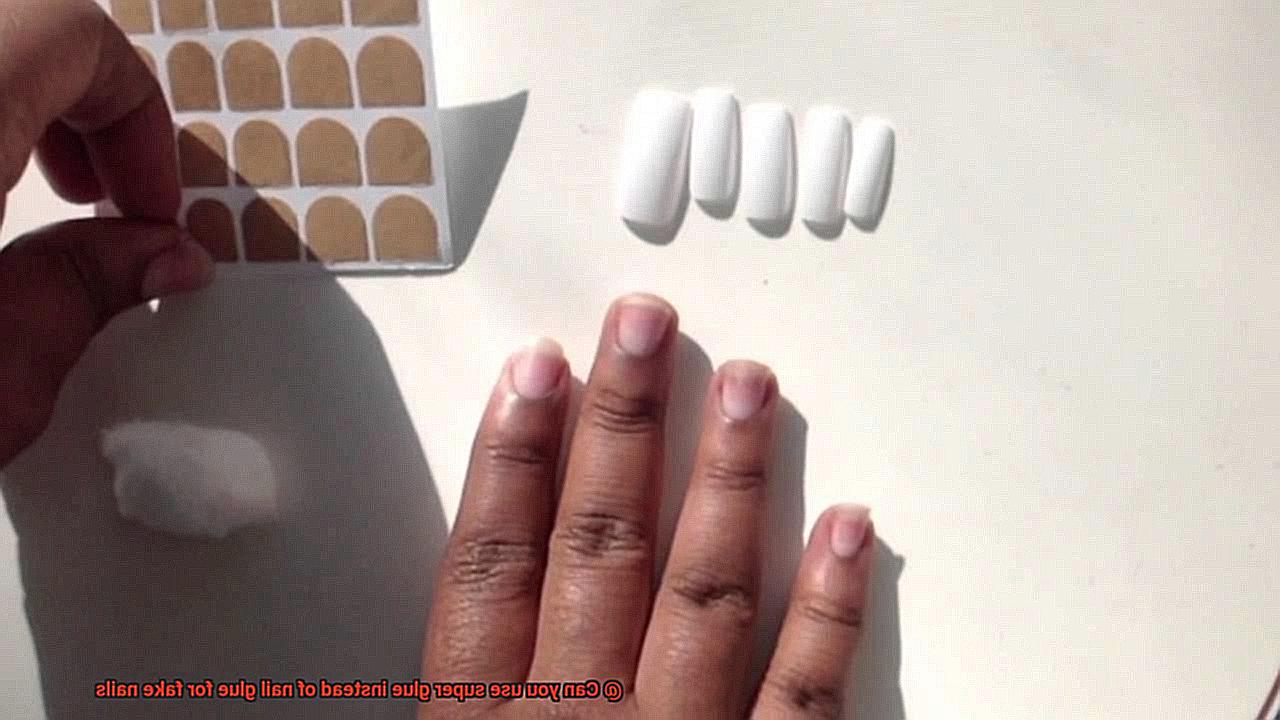
While both nail glue and super glue can be used for attaching fake nails, there are some differences to consider. Nail glue is specifically formulated for this purpose, making it safer and more suitable. It provides a strong bond and is easier to remove compared to super glue. On the other hand, super glue may cause damage to the natural nails if not handled correctly. It should only be used as a last resort option.
Tips for Long-lasting Results:
To achieve a long-lasting and secure bond when using either super glue or nail glue, follow these tips:
- Ensure your natural nails are clean and dry before applying the glue.
- Apply a thin layer of glue evenly on your natural nails or the back of the fake nails.
- Press firmly but gently when attaching the fake nails to ensure proper adhesion.
- Avoid excessive exposure to water and use gloves when doing household chores.
- Regularly moisturize your cuticles and nails to prevent dryness and breakage.
Tips for Removing Fake Nails with Super Glue or Nail Glue
Removing fake nails that have been applied with super glue or nail glue can be a delicate process. It’s important to approach it with caution to avoid damaging your natural nails. Here are some tips for safely removing fake nails using these strong adhesives:
- >Soak the nails: Begin by soaking your nails in warm soapy water for about 10-15 minutes. This will help soften the glue and make it easier to remove the fake nails. You can add a few drops of gentle dish soap or a mild hand soap to the water to create a soapy solution.
- File the top layer: Gently file the top layer of the fake nail using a fine-grit nail file. This will help break the seal and allow the glue to loosen. Be careful not to file too aggressively, as this can damage your natural nails.
- Pry the edges: Use a cuticle pusher or an orangewood stick to gently pry the edges of the fake nail away from your natural nail. Start at one corner and work your way around, gradually lifting the entire nail. If there is any resistance, stop and repeat the soaking process for a few more minutes to further soften the glue.
- Take breaks: It’s important to take breaks during the removal process to prevent excessive force or damage to your natural nails. If you encounter any difficulty in removing a particular nail, give it some time and revisit it later. Patience is key in ensuring a safe removal process.
- Smooth out roughness: Once all the fake nails have been removed, use a nail buffer to gently smooth out any roughness or residue left behind by the glue. Buffing will help ensure that your natural nails look and feel smooth after the removal process.
It’s important to note that using harsh chemicals like acetone or other solvents to remove super glue or nail glue can cause further damage to your nails. These chemicals can strip away the natural oils and moisture from your nails, leaving them dry and brittle. If there are any stubborn spots of glue that are difficult to remove, it’s best to seek professional help from a nail technician.
Conclusion
Using super glue instead of nail glue for fake nails is not recommended.
While super glue may seem like a quick fix, it can cause damage to your natural nails and skin. Nail glues are specifically formulated for use on nails, ensuring a strong bond without harming your nail bed.
Additionally, nail glues often have added ingredients that promote flexibility and durability, which super glue lacks.

